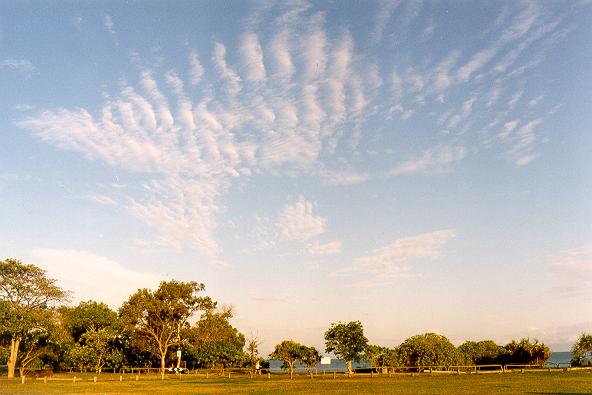
Sr. Research Scientist

 |
M. Joan Alexander Sr. Research Scientist |

|
Publications - Research - Field Campaigns - Vitae - Miscellaneous - Contact
In order to better predict the weather and better understand
climate change, many atmospheric scientists are involved in
developing computer simulations that describe the global
circulation of the atmosphere. These global circulation models
(GCMs) cannot explicitly resolve all of the scales of phenomena
important in the atmosphere, so they use parameterizations of
some of the smaller-scale processes, such as clouds, precipitation,
and many others including the effects of small-scale atmospheric
waves on the circulation.
 My research focuses on atmospheric waves of all scales
ranging from global scale to small-scale
atmospheric gravity waves that have horizontal wavelengths in
the range of about 10 to 1000s of km. These waves are poorly
described in GCMs, yet they can have dramatic effects on the
global-scale circulation, so they must be parameterized.
My research focuses on atmospheric waves of all scales
ranging from global scale to small-scale
atmospheric gravity waves that have horizontal wavelengths in
the range of about 10 to 1000s of km. These waves are poorly
described in GCMs, yet they can have dramatic effects on the
global-scale circulation, so they must be parameterized.
Observations: The small scales of gravity waves have made global observations of their properties and occurence difficult. Our understanding of them is therefore
relatively new, and therefore still very incomplete. My research
focuses on developing the needed understanding through observations
and observational analyses, and through computer modeling of gravity
wave sources, their propagation through the atmosphere, and their
interaction with regional and global circulations.

Global Models: Increases in computing power over time permit us to directly
simulate gravity waves in some global models. The image at left
shows vertical motion in the atmosphere near the tropopause
allowing visualization of the gravity waves resolved in a 7-km
resolution NASA GEOS-5 model run by the Global
Modelling and Assimilation Office. The circular features near
the equator show waves generated by storms in the atmosphere
below. Waves are also prominent over the northern (winter in
this image from January)
mountain ranges and storm tracks. Studying the waves in these
models permits investigation into the nature of the sources of
the waves and how the waves dynamically interact with the
larger-scale circulation. Click on Global Modeling Studies to learn more.

Regional Models: Limited-area regional models with a
range of complexity permit studies of the properties of gravity
waves generated by convection in varied environmental
conditions. The models range from full-physics simulations with
models like the Weather Research and Forecasting (WRF) model to
very idealized models forced by localized, time-varying
heating. An example at right shows radar-observed rain at the
ground (colors) and vertical velocities caused by the waves
(gray shading) near the tropopause. Click on Gravity Wave Generation by Storms to learn more.
Research Projects: